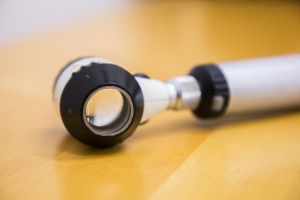Skin Cancers and their treatment
Full Skin Checks are recommended
Australians have one of the highest rates of skin cancer in the world and many of these are subtle and can be easily missed. If you are concerned that a lesion has changed, is growing or not healing it is worthwhile consulting your GP and possibly getting a referral to a dermatologist.
Dermatologists are experts in the early detection and treatment of precancerous lesions and skin cancers.
At Central Sydney Dermatology we have pioneered may of these treatments including Aldara as a nonsurgical skin cancer treatment option (A/Prof Stephen Shumack and the use of Metvix daylight photodynamic therapy for precancers and superficial nonmelanoma skin cancer (Dr Jo-Ann See)).
At Central Sydney Dermatology we are able to give you the best treatment options whether they be surgical or nonsurgical treatments.
Sometimes treatments can be done during the first visit such as liquid nitrogen cryotherapy or another visit may be necessary for some nonsurgical options such as photodynamic therapy or if a biopsy is required to confirm the diagnosis. We are able to perform minor surgical skin cancer procedures without the need to attend the day surgery or hospital. The pathology sample is then sent to a specialist in skin pathology to ensure the best possible diagnosis.
Skin Cancers
Non Melanoma Skin Cancers (NMSC)
Actinic or solar keratosis
These are precancerous growths typically seen on the face and hands as pink scaly lesions. They have a small risk of transforming into squamous cell cancer and they serve as risk markers for the future development of skin cancer.
They are commonly treated with liquid nitrogen although your dermatologist may discuss other treatment options such as creams, photodynamic therapy and even chemical peel.
Basal Cell Carcinoma (BCC)
This is the most common type of skin cancer and they are slow growing and rarely spread to other parts of the body. Treatment can be with surgical excision in our procedure room or with nonsurgical treatment. Sometimes we may refer for specialised surgery if the lesions are high risk or in cosmetically sensitive areas.
Once a BCC is diagnosed and treatment given, we recommend review and a regular 6 to12 month check.
Squamous Cell Carcinoma (SCC)
Although less common than BCC, the squamous cell cancer has a higher risk for spread and therefore diagnosis and management is essential to prevent this. They may be treated surgically or if superficial then nonsurgical methods could be an alternative and your dermatologist will advise you.
Keratoacanthoma
These rapidly growing tumours are often difficult to distinguish from the more aggressive squamous cell cancer that does not resolve spontaneously and diagnosis and management is advised.
Melanoma
Early diagnosis and management is vital due to the risk of spread. Most lesions tend to be pigmented however there are some varieties that do not contain pigment and these lesions may grow quickly so biopsy and diagnosis is crucial.

